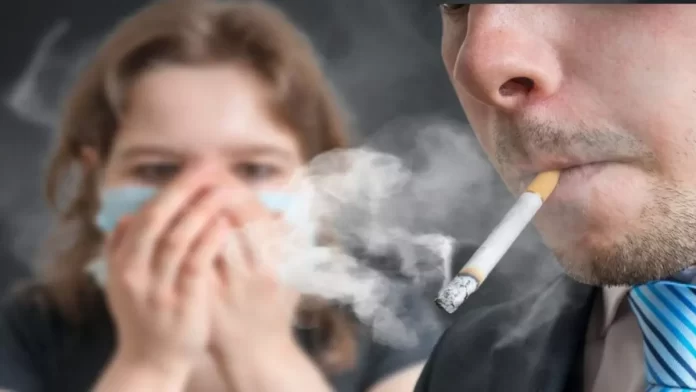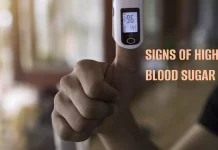You’re out with friends at a cozy café, enjoying your favorite drink and conversation. The ambiance is just right – except for that one thing. Now and then, the persistent aroma of cigarette smoke drifts past, a reminder that not everyone here is just sipping on lattes. You might not realize it, but that secondhand smoke drifting your way carries more than just an unpleasant scent; it transfers health risks too.
What’s Secondhand Smoke Anyway?
Let’s know what secondhand smoke truly entails. Secondhand smoke, often called passive or environmental tobacco smoke, includes the smoke breathed out by a person smoking and the smoke released from burning tobacco products like cigarettes, cigars, or pipes. It isn’t just harmless puffs of air – it’s a mixture of more than 7,000 chemicals, with hundreds of them being harmful and around 70 known to trigger cancer. Quite alarming.
The Unseen Dangers
Now, let’s talk about the elephant in the room: the impact of secondhand smoke on non-smokers. You might not be puffing on that cigarette, but if you’re breathing in the same air as a smoker, you’re involuntarily inhaling those harmful chemicals. It’s like being part of a toxic party you never signed up for.
Health Hazards Galore
Secondhand smoke isn’t picky – it affects everyone, from babies to seniors. But let’s break it down:
- Kids and Babies: Children exposed to secondhand smoke are at a higher risk of sudden infant death syndrome (SIDS), respiratory infections, ear infections, and even slowed lung growth. Imagine those little lungs trying to grow in a haze of toxins!
- Teens: Inhaling secondhand smoke puts adolescents at a greater risk of developing respiratory issues like asthma and makes them more susceptible to ear infections. Furthermore, this exposure doesn’t bode well for fostering healthy lung function in the long run.
- Adults: Non-smoking adults are not exempt from these risks either. They face an increased risk of heart disease, stroke, and lung cancer. Those romantic walks in the park could get less romantic when you’re wheezing through them.
The Workplace Woes
While smoking bans have improved things in many places, exposure to secondhand smoke is still a concern in some workplaces, bars, and restaurants. Employees laboring in such environments often encounter health risks they hadn’t anticipated, as a reminder that ensuring smoke-free air extends beyond individual choices – it’s about nurturing a healthier community for all.
Protecting Yourself and Others
So, what can you do to shield yourself and others from the impact of secondhand smoke? Here are a few tips:
- Support Smoke-Free Spaces: Whenever possible, choose venues that enforce a no-smoking policy. Your lungs will thank you.
- Speak Up: If you are near someone smoking in a designated non-smoking area, politely reminding them of the rules is entirely acceptable. After all, everyone deserves to breathe clean air.
- Create Smoke-Free Homes: If you’re a smoker, try to keep your home smoke-free. If you’re a non-smoker living with a smoker, encourage them to take it outside.
- Spread Awareness: Share information about the risks of secondhand smoke with your friends and family. The more people know, the healthier our shared spaces can become.
Conclusion
In the world, we share, every breath matters. The impact of secondhand smoke on non-smokers is a stark reminder of the far-reaching consequences of our actions. No one is immune to the dangers that secondhand smoke presents. But armed with knowledge, we have the power to make a change. By speaking up for clean air and raising awareness about the health risks of secondhand smoke, we can collectively create a safer and healthier world for everyone. Therefore, let’s persist in selecting air devoid of toxins, paving the way for a future where every breath is a fresh and invigorating one.
Frequently Asked Questions (FAQs)
What is secondhand smoke?
Secondhand smoke is the combination of smoke exhaled by a smoker and the smoke released from burning tobacco products like cigarettes, cigars, or pipes. It contains harmful chemicals that can pose health risks to non-smokers.
How does secondhand smoke affect non-smokers’ health?
Secondhand smoke exposure can lead to various health issues, including respiratory infections, asthma exacerbation, ear infections in children, and an increased risk of heart disease, stroke, and lung cancer in adults.
Are children more vulnerable to secondhand smoke?
Yes, children are particularly vulnerable to secondhand smoke. Exposure can lead to serious health problems like sudden infant death syndrome (SIDS), reduced lung growth, and a higher likelihood of respiratory infections.
Can secondhand smoke impact teens’ health?
Absolutely. Teens exposed to secondhand smoke are at an increased risk of developing respiratory problems like asthma. They’re also more prone to ear infections, affecting their overall well-being.
What health risks do non-smoking adults face from secondhand smoke?
Non-smoking adults exposed to secondhand smoke have a higher risk of heart disease, stroke, and lung cancer. Prolonged exposure can have critical implications for their cardiovascular and respiratory health.
Is there a connection between secondhand smoke and workplace health?
Yes, exposure to secondhand smoke in workplaces, bars, and restaurants can harm employees’ health, causing respiratory-related issues.
How can I keep myself and my family safe from secondhand smoke?
Support smoke-free spaces, speak up when someone is smoking in prohibited areas, create smoke-free environments at home, and spread awareness about the risks of secondhand smoke.
Is secondhand smoke exposure a concern even in outdoor areas?
Yes, being near secondhand smoke can still affect your health. Although the risks might be a bit less because the air moves around better, it’s important to remember that staying away from smoking people outside can still help you avoid breathing in that smoke.











